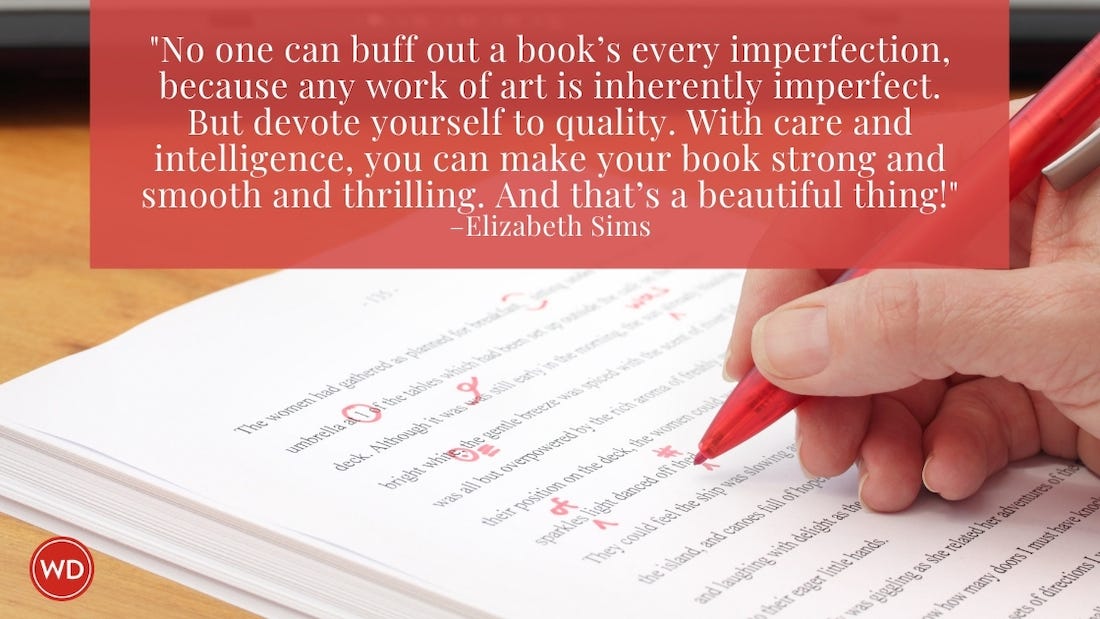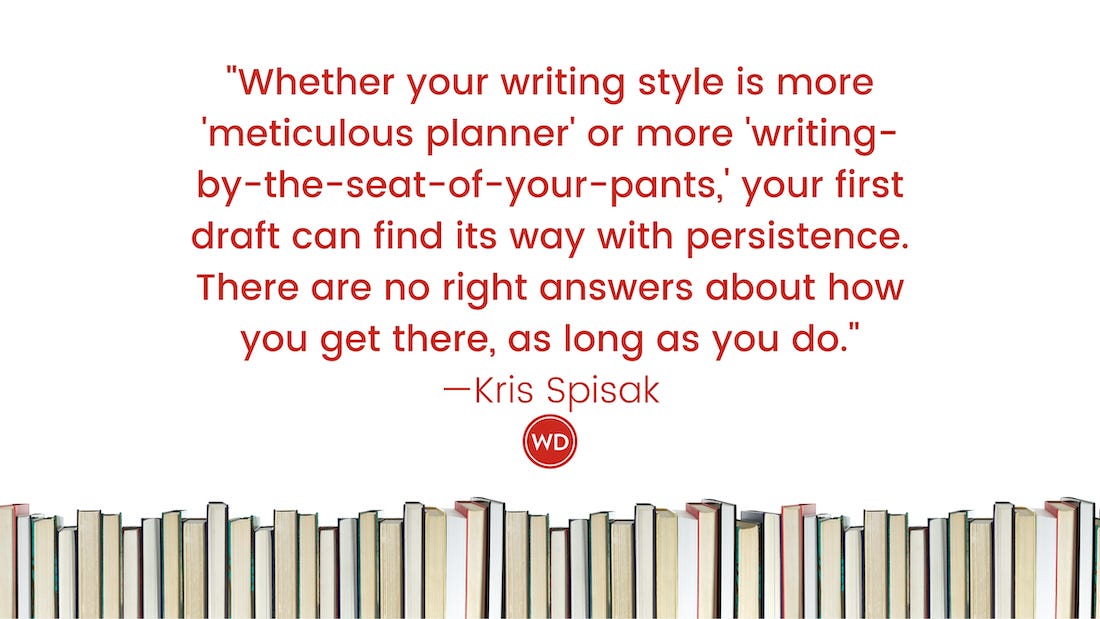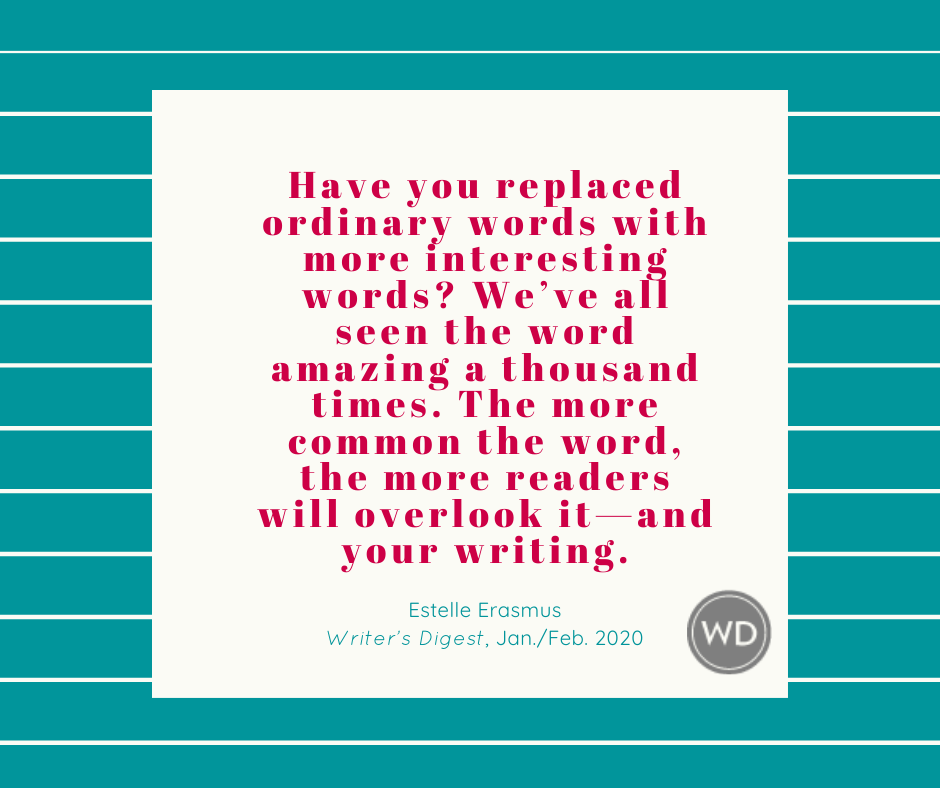How to Use an Outline to Write a First Draft
Once you’ve completed an outline, it’s time to put it to use and get to work on your first manuscript draft. Chances are, you’ll face a lot of questions. Let us help you answer them.
Once you’ve completed an outline, it’s time to put it to use and get to work on your first manuscript draft. You may have a million questions at this point. For example, is it a bad thing if your book doesn’t seem to follow your outline exactly, and what, if anything, should you do if this happens? What if another story starts bugging you while you’re working on this one? What if you discover you’ve forgotten to add something to your outline, or come up with a new plot thread during the writing of the book and you want to add it in? What if you start to experience the symptoms of writer’s block in the middle of a project? Can you revise the book while you’re writing it? When should the editing and polishing take place?
You’ll face most of these questions as you turn your outline into a formal manuscript, and each one will require your attention. Let’s discuss these issues in detail:
TWEAKING YOUR OUTLINE AS YOU WRITE
First of all, put your outline away and let it sit on the shelf for a while until you’re ready to take it down again and make sure it’s still solid. The truth is, most writers get so sick of a book during the process of outlining and then writing that they have a hard time viewing their manuscript with impartiality. They may simply want to get away from it, and tell themselves the book is solid enough. Sufficient shelf-time will remove your inability to look at the outline for more than a minute. Although your outline very well may already be strong, you may need to do a little layering before you begin the actual writing. Give yourself some time to do this.
Once you begin the writing, it’s important to end all of your sessions by going over the next scene in your outline. You want each scene firmly in your mind before you begin writing the next day. Jot down notes at any time as the next scene is fleshed out even further in your mind, especially if it comes in great detail.
Reviewing upcoming scenes allows you to think about how those scenes fit into what you’ve just written. If your book doesn’t always seem to follow your outline, yet the writing seems good to you—better perhaps than what your outline included—go with it. As you write, you’ll be creating a living, breathing entity that will continue to grow on its own, in ways your outline may not account for. That’s the magical part of writing. Rejoice when it happens! Just make sure you adjust your full outline or manuscript accordingly to take new angles into account.
Even if your first manuscript draft seems to be following your outline closely, periodically you’ll need to go over the rest of the outline to make adjustments and account for the growth of the plot or characters. Read over your notes, get a good feel for what you want to do and then make the necessary modifications.
PURGING NEW IDEAS
If a new story idea starts to bug you while you’re writing, you may need to stop and take down notes about it as the ideas come to you. Alternatively, don’t be afraid to take a day off from your work-in-progress to exorcise this new idea and send it back to your creative coffeepot. You won’t be starting a new outline here—you’ll be simply making notes (which will be the puzzle pieces you’ll need to keep your livelihood going strong indefinitely) on a future one. It’s better to lose a single day of writing than to lose all inspiration for the current project in favor of something completely different. Once you’ve purged, return to the original project immediately and concentrate on it fully. Be disciplined.
CREATING FINAL EDITING SHEETS
While you’re writing your novel, start what I like to call a final editing sheet, which you’ll use for your final edit of the book. This sheet should contain anything that needs to be added, deleted or revised in the story when you’re done. You don’t want to break up the flow as you write, so, if you realize that you forgot to add something to the outline, or that you need to incorporate a new idea while working, take down a note now and correct it after you’re done writing the first draft. Include chapter, scene and page numbers, if you need to, so you’ll be able to make the corrections easily when you come back to these points later.
PUSHING THROUGH WRITER’S BLOCK
Writer’s block is being unable to write while working on a project. The only way you can combat this is by realizing that writer’s block has a little-known cure: Making sure you brainstorm enough between scenes as you’re working, which generally means writing only what you planned to write on any given day.
Does this cure sound too simple to explain a wide-spread malady that plagues such a huge chunk of the writing population? Think about it this way: Brainstorming shouldn’t stop simply because you’ve completed an outline. It’s a necessary part of every single aspect of a novel. If you write only what you plan to write any given day, thereby giving yourself sufficient time to brainstorm between scenes, the next time you sit down to work, you’ll be aware of what should happen in the book and will begin writing immediately. If you’re working from an outline, you know exactly what will happen in every scene, and you have no excuse for not brainstorming or for going blank when you sit down to write.
To avoid writer’s block, write the scene you planned to write that day, then spend the rest of the day figuring out in your mind how your next scene will start, develop and conclude. Write all the notes you can about the upcoming scenes—just don’t start writing those scenes until the following day.
LEAVING THE REVISION FOR LATER
Revision and writing are two completely different processes that require different mindsets. Don’t try to do both at the same time. Wait until you’ve completed the first draft of the novel before you do any editing or revising.
If you need to refresh yourself on what happened in the previous scene, skim your outline instead, or get in the habit of reading back over every scene you write on the same day you finish it. If you do this, you’ll eliminate the need to reread the next day to refresh yourself—and eliminate the urge to revise instead of write, too.
The most efficient way to work is by saving all the revising and editing until the novel is complete. Don’t shoot yourself in the foot by constantly revisiting prior scenes.
Similarly, editing and polishing, while very important to the overall product, are not part of building the story and should be the final “dress-up” step. Remember, a draft is any major writing or revision of a story (like adding a significant amount of scenes to the book, or completely re-writing significant portions of it).
Editing and polishing are “cleanup” jobs, including:
—Rearranging sentences or scenes
—Tightening sentences and individual words (such as changing verbs from passive to active, and/or cleaning up repetitiveness)
—Adding details or minor research
—Adding or deleting scenes
—Fixing any minor corrections
If your outline is indeed solid, editing and polishing should be almost as simple as reading through the manuscript, making the minor adjustments and performing any task noted on your final editing sheet. All books experience healthy growth through the process of writing based on a full outline, so you’ll probably need to do some tweaking, polishing of sentences and structure, and layering of details.
Start editing and polishing after a week or more of distance. If you can, set the book aside for a couple of months before doing this step. I finished writing the first draft of my novel First Love quite literally the weekend before I was supposed to start an annual writers’ reference book update. I set First Love aside for the three months it took to complete the nonfiction project. When I picked up the novel again, it was as if I were reading someone else’s work, and I was pleasantly surprised by what I’d accomplished.
When you use these simple techniques to help you finish your first draft, you’ll have the chance to experience this for yourself. Seeing how the skeleton of your outline becomes a walking, talking, breathing, living story is one of the most exhilarating aspects of being a writer.
Never face a blank page again. Consider:
The Write-Brain Workbook
*This one-of-a-kind guide provides a full year of writing excercises and games designed to get thoughts brewing and the pen moving across the page.
Become a WD VIP and Save 10% on this book:
Get a 1-year pass to WritersMarket.com, a 1-year subscription to Writer’s Digest magazine and 10% off all WritersDigestShop.com orders! Click here to join.
Also check out these items from the Writer’s Digest’s collection:
The Writer’s Idea Book
The Pocket Muse
A Picture Is Worth 1,000 Words
Digital Download: Writer’s Book of Matches Writing Prompt Book
Writer’s Digest Weekly Planner
Writer’s Digest No More Rejections
Writer’s Digest Magazine One-Year Subscription
Elements Of Writing Fiction: Beginnings, Middles & Ends
Elements Of Writing Fiction: Scene & Structure
Elements Of Writing Fiction: Description
Elements Of Writing Fiction: Characters & Viewpoint









